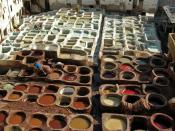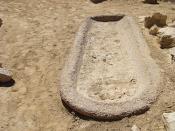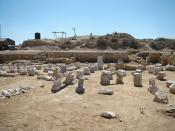There are many factors determining which artifacts survive and which are destroyed. Objects made from bone, wood, and leather, are more susceptible to deterioration and rarely last for thousands of years. Stone and ceramic artifacts, on the contrary, are very durable. Relatively few artifacts survive over long periods of time. Usually, only durable artifacts, those made of stone, bone, pottery, or metals, survive. Artifacts made of wood, leather, or other fragile materials rarely remain. As a result, archaeologists have an incomplete view of the past. Very dry climates in desert regions may preserve normally perishable objects. The heat and the absence of moisture prevent decay. Organic material normally decays in more temperate regions, but some may be preserved in lakes and rivers under layers of silt and in water-logged peat bogs and marshes. Very cold climates provide perfect conditions for the preservation of organic material, where the climate acts as a refrigerator.
Composition of the soil is also an important factor, as the chemicals of a plant or an animal may react with minerals in the soil and prevent decay. Natural disasters can also take their toll on evidence, such as floods, earthquakes and volcanoes. The actions of people are one of the most significant factors in determining which artifacts survive. Warfare and conflict can be very destructive where valuable items, if not destroyed, are looted or lost. Modernisation of cities has no time for ancient ruins, and many old buildings are torn down to make way for new ones.


